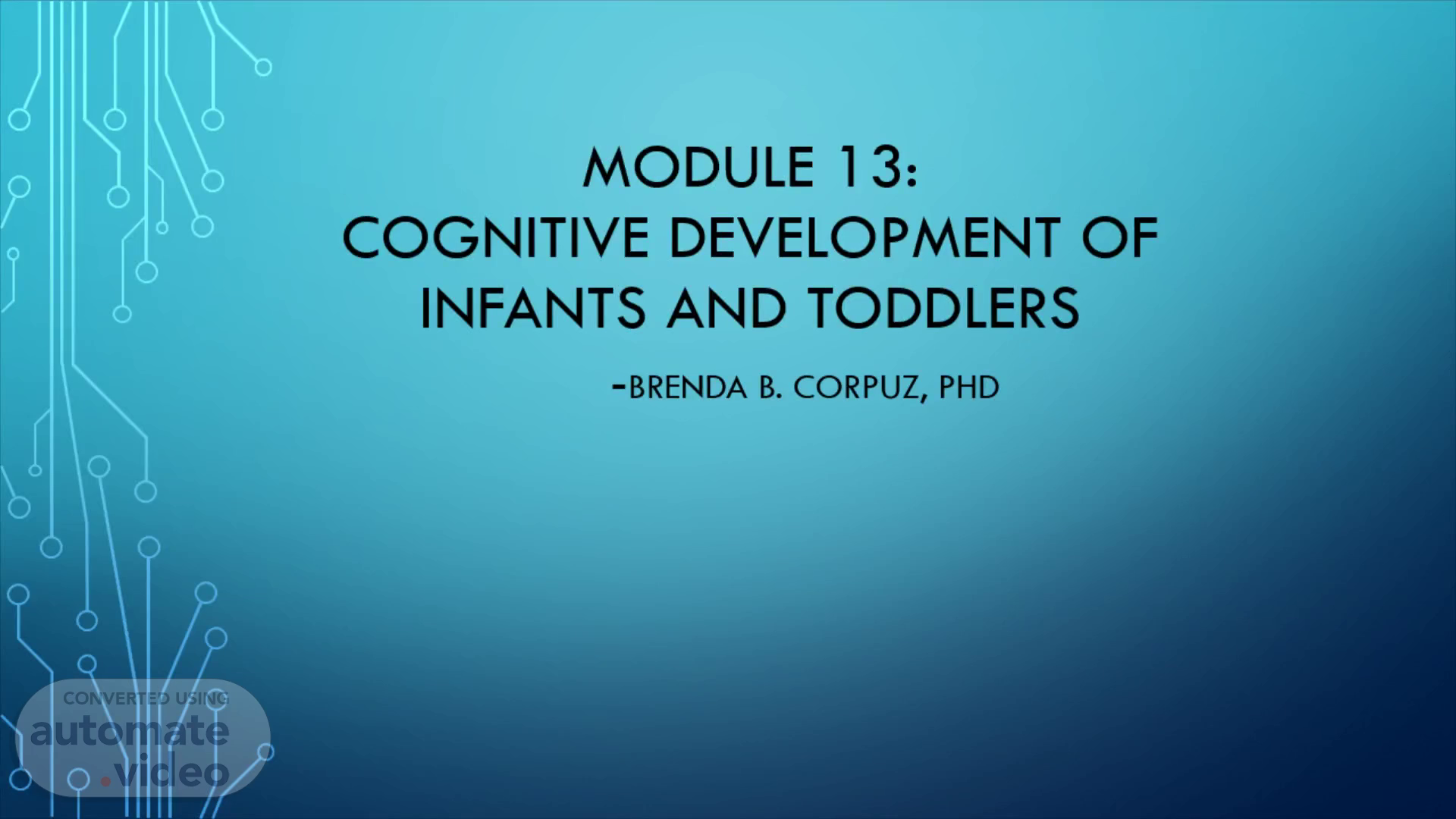
MODULE 13: Cognitive Development of Infants and Toddlers -Brenda B. CORPUZ, Phd
Scene 1 (0s)
MODULE 13: Cognitive Development of Infants and Toddlers - Brenda B. CORPUZ, Phd.
Scene 2 (34s)
Objectives;. In this module you are challenged to;.
Scene 3 (1m 5s)
Introduction:. Cognitive development in infancy refers to development in the way baby thinks. This includes his/her language, communication and exploration skills..
Scene 4 (1m 35s)
6 substages of the Sensorimotor. Developmental Stage.
Scene 5 (1m 46s)
Simple Reflexes (From birth – 6 weeks). Coordination of sensation and action through reflexive behaviors. Sucking of objects in the mouth Following moving of interesting objects with the eyes; and closing of the hand when object makes contact with the palm (palmar grasp).
Scene 6 (3m 20s)
First habits and primary circular reaction phase (6 weeks – 4 months).
Scene 7 (5m 10s)
SECONDARY CIRCULAR REACTIONS PHASE (4-8 MONTHS). Development of habits..
Scene 8 (7m 2s)
COORDINATION OF REACTION STAGE SECONDARY CIRCULAR (8 – 12 MONTHS).
Scene 9 (8m 36s)
TERTIARY CIRCULAR REACTIONS, NOVELTY, AND CURIOSITY (12-18 MONTHS).
Scene 10 (9m 55s)
INTERNALIZATION OF SCHEMES (INVENTION OF NEW MEANS THROUGH MENTAL COMBINATION (18-24 MONTHS).
Scene 11 (11m 58s)
ABSTRACTION: SENSORIMOTOR STAGE. REFLEXIVE Behaviors to more REFINED and more COORDINATED activities..
Scene 12 (12m 55s)
Piaget’s substages are term circular because the adaptative behavior to the world involves repeated action. Circular reactions are attempts to repeat an event that the baby likes circular reactions serve as the building blocks for intelligence. (Pasek, P and Gollinkoff, R. 2003).
Scene 13 (14m 41s)
Tertiary circular reactions, seen from approximately 10-18 months, is when a baby does things over and over again.